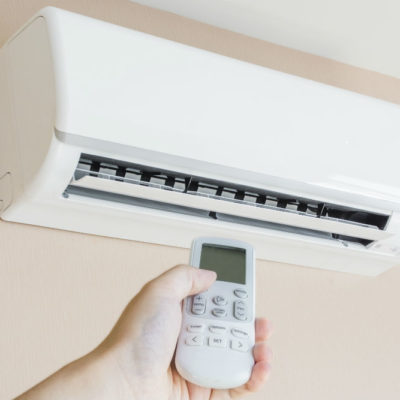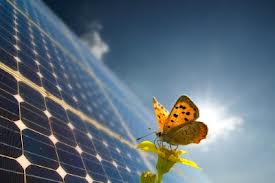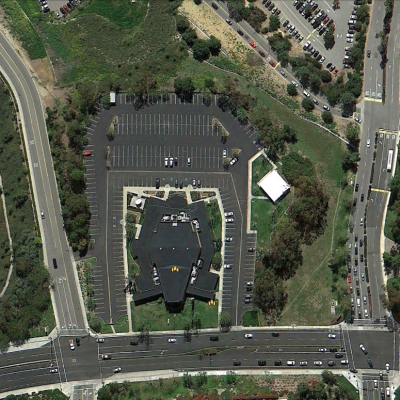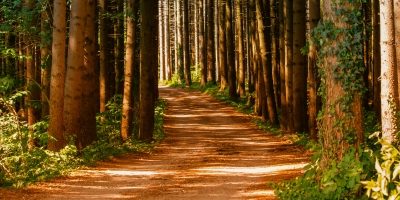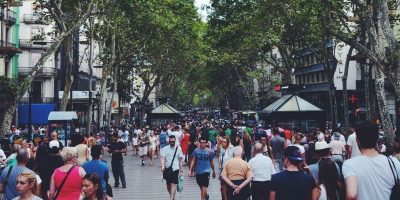
by D. Brent Sauser, AIA
July 15,2021
“The World will not evolve past its current state of crisis by using the same thinking that created the situation.” -Albert Einstein
 I find it interesting that this generation has found it necessary to give a name to a way of living that, up until three or four generations ago, we took for granted as the only option for living. Today we travel from man-made environments to man-made environments in environmentally controlled vehicles. The pollution created by living such an unnatural lifestyle has been justified for decades as progress. It is not surprising that the idea of returning to our Net Zero roots might be looked upon as a giant leap backwards, something outside current construction practices and lifestyle expectations. Prior to the discovery of electricity, we were all living a type of Net Zero lifestyle whether we liked it or not. But now, since we have disconnected ourselves from the symbiotic relationship we once had with our natural environment, we attribute a name
I find it interesting that this generation has found it necessary to give a name to a way of living that, up until three or four generations ago, we took for granted as the only option for living. Today we travel from man-made environments to man-made environments in environmentally controlled vehicles. The pollution created by living such an unnatural lifestyle has been justified for decades as progress. It is not surprising that the idea of returning to our Net Zero roots might be looked upon as a giant leap backwards, something outside current construction practices and lifestyle expectations. Prior to the discovery of electricity, we were all living a type of Net Zero lifestyle whether we liked it or not. But now, since we have disconnected ourselves from the symbiotic relationship we once had with our natural environment, we attribute a name 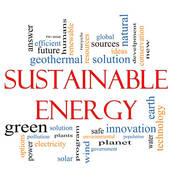 to this alternative living approach . . . Net Zero: A term used for construction that consumes less, or as much, energy as it produces on site. Those open minded to the idea of building Net Zero may believe that to do so is cost prohibitive and that the technology has not advanced enough to make it feasible at a large scale.
to this alternative living approach . . . Net Zero: A term used for construction that consumes less, or as much, energy as it produces on site. Those open minded to the idea of building Net Zero may believe that to do so is cost prohibitive and that the technology has not advanced enough to make it feasible at a large scale.
To better understand Net Zero we need to take a look at what the term “Sustainable” means. In 1987, the World Commission on Environment and Development Report on Our Common Future defined sustainable as: “Development that meets the needs of the present without compromising the ability of future generations to meet their own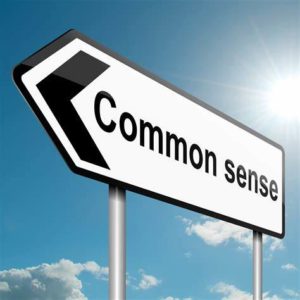 needs.” Seems to me that’s just another way of stating the Golden Rule. It sounds like good old common sense. Who wouldn’t agree with the idea of future generations having the resources to sustain them? Yet, if I were to ask you if you thought we, as a worldwide community, are doing everything possible to live in a way that will assure ample resources for future generations, how would you respond? We can do better, a lot better!
needs.” Seems to me that’s just another way of stating the Golden Rule. It sounds like good old common sense. Who wouldn’t agree with the idea of future generations having the resources to sustain them? Yet, if I were to ask you if you thought we, as a worldwide community, are doing everything possible to live in a way that will assure ample resources for future generations, how would you respond? We can do better, a lot better!
Building Net Zero helps to assure that future generations will have the resources they need to sustain themselves. Achieving Net Zero means not having to totally depend on the public utility to provide electrical power. You have your own onsite power plant to sustain you, and that is the very essence of what being sustainable is all about. The more buildings we can remove from total dependence on the public utility power grid, the less non-renewable resources will be required to fuel the various public utilities. The term 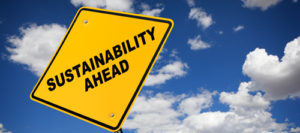 “sustainable” can be defined with a broad brush (as with the above definition) or in a specific sense. My focus is on sustainability as it relates to energy conservation.
“sustainable” can be defined with a broad brush (as with the above definition) or in a specific sense. My focus is on sustainability as it relates to energy conservation.
We know when we have achieved Net Zero after adding up 12 consecutive months of electrical bills the bottom line is either ZERO or less than zero. If it’s more than zero, it’s not Net Zero. It is called “Net” Zero because some months (i.e., summer) may draw needed energy from the utility grid to compensate for increased demand, while the milder months may result in returning surplus power back to the utility company. If after the end of a year more power has returned to the utility company than has been needed onsite. . . you are Net Zero. However, please keep in mind that a Net Zero solution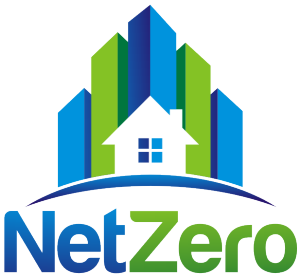 does NOT mean total energy independence from the utility grid. A Net Zero building is still tied to the utility power grid and subject to power loss during emergency shutdowns. Onsite power production is at its peak during daylight hours, when most are away from the home. Much of the power generated during the daytime can be recycled back into the utility grid. But once the sun sets, even the Net Zero home must rely on utility grid power to satisfy the evening power demand. The objective is to recycle more daytime production to the utility then consume after sunset.
does NOT mean total energy independence from the utility grid. A Net Zero building is still tied to the utility power grid and subject to power loss during emergency shutdowns. Onsite power production is at its peak during daylight hours, when most are away from the home. Much of the power generated during the daytime can be recycled back into the utility grid. But once the sun sets, even the Net Zero home must rely on utility grid power to satisfy the evening power demand. The objective is to recycle more daytime production to the utility then consume after sunset.
Complete energy independence requires the use of onsite energy storage systems (ESS), or batteries. Research and development of various energy storage systems is ramping up on a large scale. But low cost, efficient, and long-lasting systems may still be a few years from cost effective mass production. In the meantime we need to still depend on the utility grid to help balance our demand cycles.
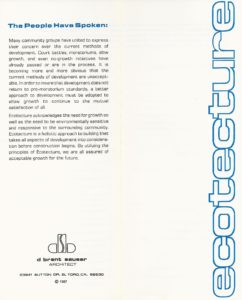 In 1987, I began writing a book entitled “Ecotecture”, that focused on the need to move from a dollar driven bottom line to a more environmentally sensitive design approach (precursor to the Triple Bottom Line). During this period, I made presentations to the Sierra Club and other interested environmental groups. There was no US Green Building Council (USGBC) in 1987, no local LEED Chapters to present to, and no nationwide movement to encourage sustainable design. At the time it appeared to be a mountain too tall to climb. I decided to file my notes and wait to continue my Ecotecture efforts sometime in the future. I came to practice architecture in Florida via Minnesota. In 2004, a headhunter discovered me and called to ask if I would be interested in moving to Orlando. His timing was excellent because it was the dead of winter. It gets mighty cold in Minnesota. I didn’t hesitate in expressing interest. He matched me up with a firm that was looking for a senior architect with government experience. We had many telephone conversations before I was flown to Florida for a face-to-face interview. I recall one phone call where he asked, “What do you know about sustainable design?” After an awkward pause, I tried my best to answer the question. If he had asked me what I knew about Ecotecture I could have told him, but the word “sustainable” was an unfamiliar way to say the same thing. I was hired anyway, and by early 2005, I had passed the USGBC LEED exam to become a LEED Accredited Professional (BD+C). After several years I finally decided to strike out on my own and reconnect with my Ecotecture (now sustainable design) roots. As owner of my own architectural firm our mission is to promote the virtues and benefits of Sustainable Architecture while designing to achieve a Net Zero solution.
In 1987, I began writing a book entitled “Ecotecture”, that focused on the need to move from a dollar driven bottom line to a more environmentally sensitive design approach (precursor to the Triple Bottom Line). During this period, I made presentations to the Sierra Club and other interested environmental groups. There was no US Green Building Council (USGBC) in 1987, no local LEED Chapters to present to, and no nationwide movement to encourage sustainable design. At the time it appeared to be a mountain too tall to climb. I decided to file my notes and wait to continue my Ecotecture efforts sometime in the future. I came to practice architecture in Florida via Minnesota. In 2004, a headhunter discovered me and called to ask if I would be interested in moving to Orlando. His timing was excellent because it was the dead of winter. It gets mighty cold in Minnesota. I didn’t hesitate in expressing interest. He matched me up with a firm that was looking for a senior architect with government experience. We had many telephone conversations before I was flown to Florida for a face-to-face interview. I recall one phone call where he asked, “What do you know about sustainable design?” After an awkward pause, I tried my best to answer the question. If he had asked me what I knew about Ecotecture I could have told him, but the word “sustainable” was an unfamiliar way to say the same thing. I was hired anyway, and by early 2005, I had passed the USGBC LEED exam to become a LEED Accredited Professional (BD+C). After several years I finally decided to strike out on my own and reconnect with my Ecotecture (now sustainable design) roots. As owner of my own architectural firm our mission is to promote the virtues and benefits of Sustainable Architecture while designing to achieve a Net Zero solution.
![]()

